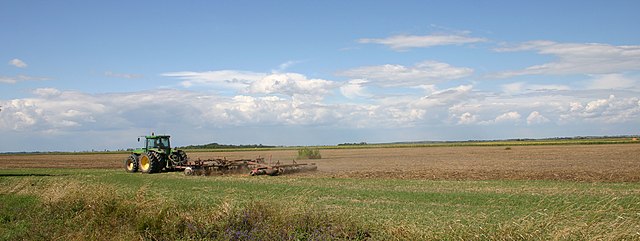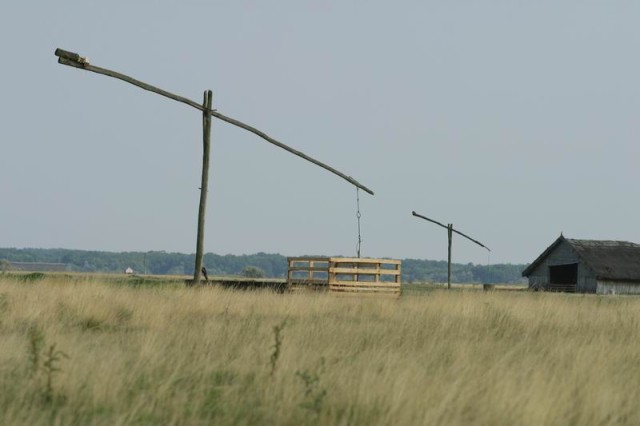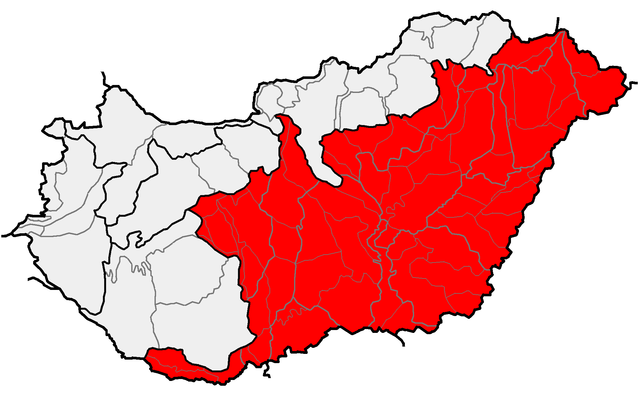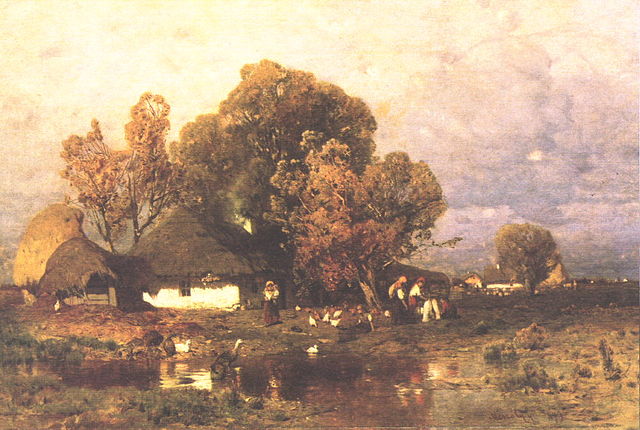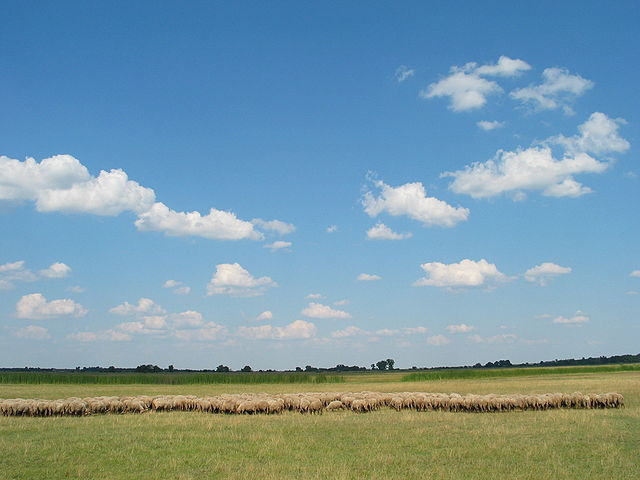
| GREAT HUNGARIAN PLAIN
Alföld The Great Hungarian Plain (also known as Alföld or Great Alföld, Hungarian: Alföld or Nagy Alföld) is a plain occupying the majority of Hungary. It is the largest part of the wider Pannonian Plain. Its territory significantly shrinked and its boundary was rewritten by the new political borders of post WW1 era, after the Treaty of Trianon in 1920.
Boundaries :
Hydrography of the Pannonian basin before the river and lake regulations in the 19th century
Wells in the Hortobágy National Park Puszta, with a stable Its boundaries are the Carpathians in the north and east, the Transdanubian Mountains and the Dinaric Alps in the southwest, and approximately the Sava river in the south.
Geography
:
The territory of the GHP in Hungary Its territory covers approximately 52,000 km2 (20,000 sq mi) of Hungary, approximately 56% of its total area of 93,030 km2 (35,920 sq mi). The highest point of the plain is Hoportyó (183 m (600 ft)); the lowest point is the Tisza River. The terrain ranges from flat to rolling plains.
The most important Hungarian writers inspired by and associated with the plain are Ferenc Móra and Zsigmond Móricz, as well as the poets Sándor Petofi and Gyula Juhász.
Hungarian scientists born on the plain include Zoltán Bay, physicist; János Irinyi, chemist, inventor of the noiseless match; János Kabay, pharmacologist; Gábor Kátai, physician and pharmacist; and Frigyes Korányi, physician and pulmonologist.
The most important river of the plain is Tisza.
The notable cities and towns with medicinal baths are Debrecen, Berekfürdo, Cserkeszolo, Gyula, Hajdúszoboszló, Szentes and Szolnok.
Among the cultural festivals and programmes characteristic of the region are the Csángófesztivál (Csángó Festival) in Jászberény, the Cseresznyefesztivál (Sweet Cherry Festival) in Nagyköru, the Gulyásfesztivál (Goulash Festival) in Szolnok, the Hídi Vásár (Bridge Fair) in Hortobágy National Park, the Hunniális at Ópusztaszer, the Szabadtéri Játékok (Open-air Games) in Szeged, the Várjátékok (Castle Games) in Gyula, the Virágkarnevál (Flower Carnival) in Debrecen and the Bajai Halászléfozo Népünnepély (Fisherman's Soup Boiling Festival) in Baja.
A farm in Great Hungarian Plain, 19th century, by Géza Mészöly
Hortobágy National Park on the Great Hungarian Plain with Racka sheep The part of the plain located in Hungary comprises the following areas :
•
Mezoföld
The portion of the Pannonian plain in Serbia is mostly divided into 3 large geographical areas: Backa, Banat and Srem (Syrmia), most of which are located in the Vojvodina province.
Plain
in Croatia :
Parts of Pannonian Croatia can be considered an extension of Alföld, particularly eastern Slavonia and the connected parts of Syrmia.
Plain
in Slovakia :
Plain
in Ukraine :
Plain
in Romania :
History :
Local autonomies (including Cumania and Jazygia) in the Kingdom of Hungary in late 13th century
Prehistoric culture :
Agriculture began in the Great Hungarian Plain with the Early Neolithic Körös culture, located in present-day Serbia, 6.000-5.500 B.C.E. followed 5.500 B.C.E. by the Linear Pottery culture(LBK) which later became the dominant agricultural culture of Europe. The LBK was followed by the Lengyel culture in the Late Neolithic 5000-3400 BC.
During the Early Bronze Age (2.800 - 1.800 BC), the growing demand for metal ores in Europe resulted in the new pan-European and intercontinental trade networks. During that period cultures of the Great Hungarian Plain incorporated many elements from the other cultures of Bronze Age Near Eastern, Steppe and Central Europe.
During the early Iron Age (first millennium BC), a variant of the Central European Hallstatt culture inhabited Transdanubia, while pre-Scythian and later Scythian cultures were found in the eastern region of the Great Hungarian Plain.
In 2014, a major study of DNA from burials in the Great Hungarian Plain was published. The 5,000-year record indicated significant genomic shifts at the beginning of the Neolithic, Bronze and Iron Ages, with periods of stability in between. The earliest Neolithic genome was similar to other European hunter-gatherers and surprisingly there was no evidence of lactase persistence at that period. The most recent samples, from the Iron Age, showed an eastern genomic influence contemporary with introduced Steppe burial rites. There was also a transition towards lighter pigmentation.
Nomadic
migrations and conquests :
Source :
https://en.wikipedia.org/ |
